Tropical Houseplants
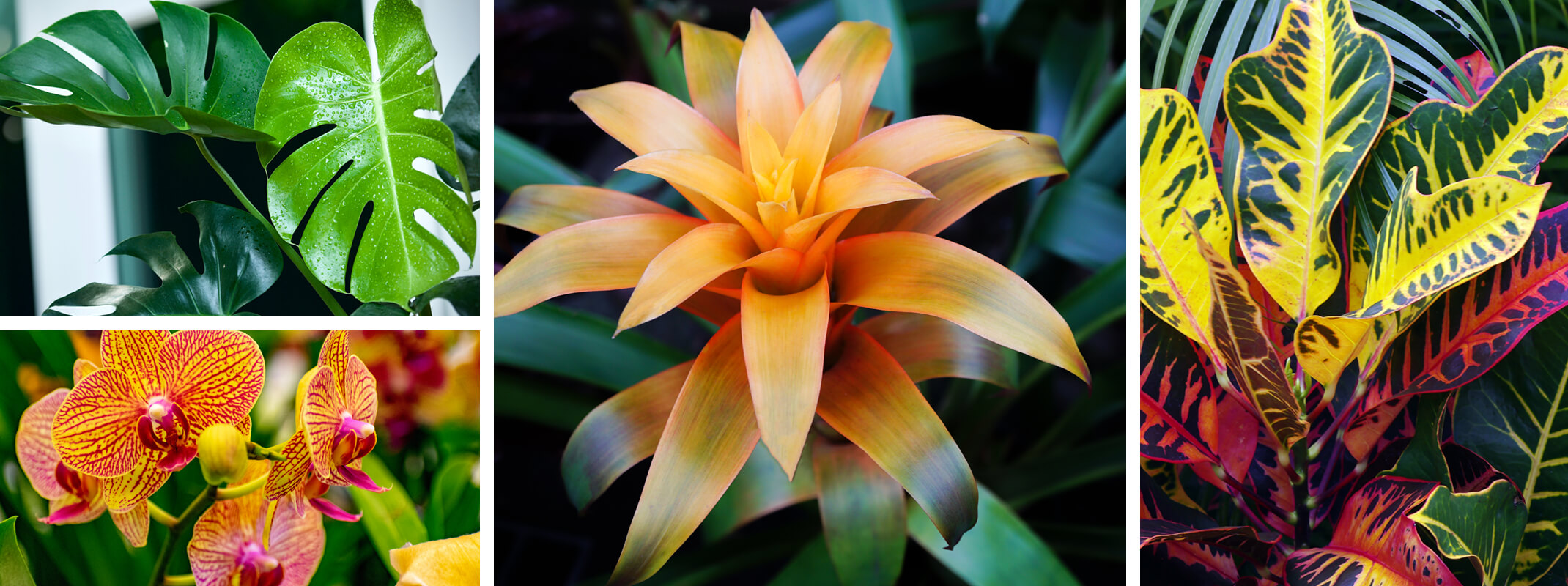
Bring Home the Tropics with These 15 Great Tropical Houseplants
Tropical houseplants originate from warm, humid environments like rainforests, where they thrive under the canopy of taller trees. They are characterized by lush foliage, vibrant colors, and unique leaf shapes that bring a touch of the exotic into your home. Because these plants are adapted to lower light levels and higher humidity, they make excellent indoor companions, adding a natural and refreshing vibe to any space. Whether you’re looking to start a tropical collection or enhance your indoor garden, these 15 beautiful tropical houseplants will help you create your own indoor paradise.
Here's a revised and expanded version of the content that adds unique details and combines the information for a more cohesive presentation:
1. Sansevieria (Snake Plant)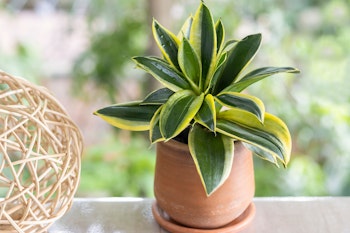
The Sansevieria, or snake plant, is a versatile choice for any space, with sizes ranging from small tabletop varieties to larger floor specimens. It's one of the easiest plants to care for, making it ideal for first-time plant owners. Sansevierias can tolerate a variety of light conditions, from low light to bright indirect light, and require minimal watering. Its upright, sword-like leaves add a modern touch to any room.
2. Orchids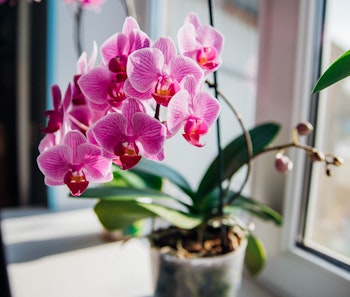
Orchids are among the most exotic and showy of all indoor plants, offering stunning blooms in various colors. While orchids thrive in bright, indirect light, they can also adapt to outdoor conditions in frost-free areas. In cooler climates, bring them indoors when temperatures drop below 40°F. Orchids prefer dappled light, and their watering needs depend on the species, but they generally require good air circulation around the roots and avoid excessive moisture. Fertilize regularly with a balanced fertilizer at half-strength.
- Light: Bright, indirect light or dappled shade
- Humidity: 40% and above
- Temperature: 40°F - 90°F (varies by species)
3. Peperomia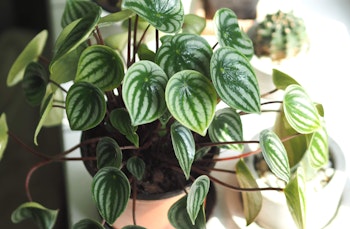
Peperomias are compact plants with thick, succulent-like leaves that come in a variety of colors and patterns. They tolerate drought well and prefer medium to bright light. Their compact size and low-maintenance nature make them perfect for desks and small spaces.
- Light: Medium to bright indirect light
- Watering: Allow soil to dry out between waterings
4. Croton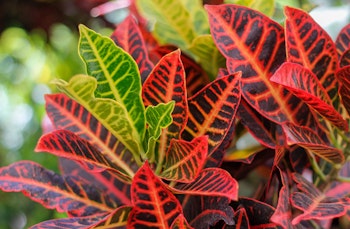
Crotons are known for their bold, colorful leaves and add a tropical vibe to indoor spaces. Though typically grown outdoors, they can adapt to indoor conditions with plenty of bright light. Crotons require consistent moisture but should not sit in soggy soil.
- Light: Bright, indirect light
- Watering: Keep soil moist but not waterlogged
5. Calathea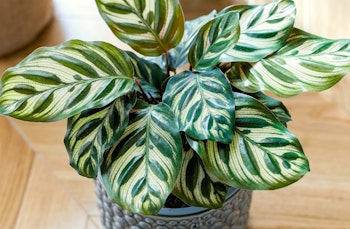
Calatheas offer striking foliage with a variety of patterns and colors, ranging from deep greens to purples and pinks. They prefer medium to low light, and their leaves may curl or close at night. Calatheas thrive in humid environments and should be kept in consistently moist soil.
- Light: Medium to low indirect light
- Humidity: High (mist regularly)
6. Bird’s Nest Fern (Asplenium nidus)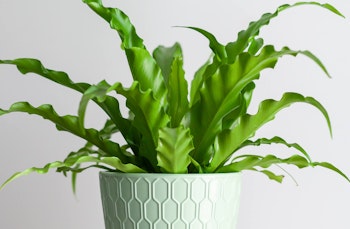
Named for its rosette-shaped foliage that resembles a bird's nest, this fern thrives in medium to low light and high humidity. The amount of light affects leaf texture, with brighter light producing more crinkles. Keep the soil moist but avoid overwatering, as the roots are sensitive to excessive moisture.
- Light: Medium to low indirect light
- Watering: Keep soil moist; avoid water pooling at the base
7. Dracaena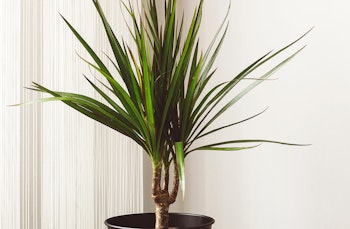
Dracaenas are adaptable plants that signal their needs through leaf color. They thrive in bright but filtered light and prefer moist, well-drained soil. Overwatering or poor drainage can lead to yellowing leaves.
- Light: Bright, filtered light
- Watering: Keep soil slightly moist; avoid waterlogged soil
8. Split-Leaf Philodendron (Monstera deliciosa)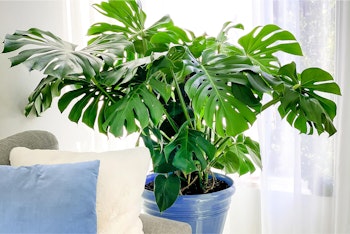
Also known as the Swiss cheese plant, this trendy houseplant has large, glossy, split leaves. It thrives in bright, indirect light and needs watering when the top half of the soil is dry. Allow excess water to drain to prevent root rot.
- Light: Bright, indirect light
- Watering: Water when the top soil is dry
9. Schefflera (Umbrella Plant)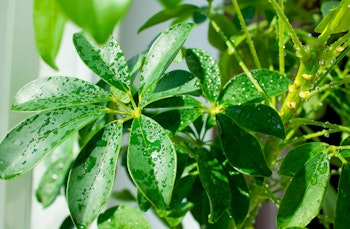
Schefflera plants have glossy, umbrella-like leaves and can adapt well to indoor environments. They prefer bright, indirect light but can tolerate lower light conditions.
- Light: Bright to medium indirect light
- Watering: Water when the top inch of soil is dry
10. Ficus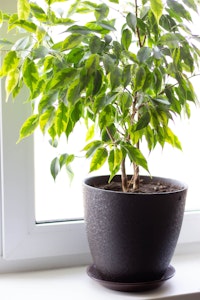
Ficus trees prefer bright indirect light, though variegated varieties can adapt to medium light. They need well-draining soil and should be watered when the soil starts to dry out.
- Light: Bright indirect to medium light
- Watering: Water when the soil starts to dry
11. Philodendron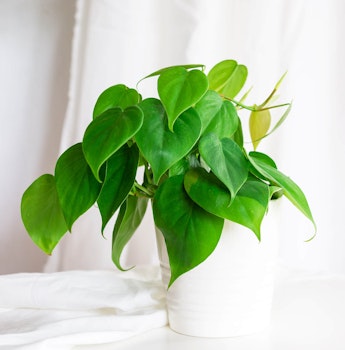
Philodendrons are popular for their beautiful foliage and come in climbing or self-heading varieties. They prefer bright, indirect light and should be kept in moist but not waterlogged soil.
- Light: Bright, indirect light
- Watering: Keep soil moist; allow excess water to drain
12. Alocasia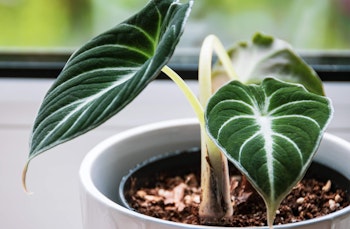
With stunning, dramatic foliage, Alocasia makes a bold statement in any space. It grows quickly in the right conditions but is sensitive to temperature and light changes. These plants thrive in high humidity and bright, indirect light.
- Light: Bright, indirect light
- Watering: Keep soil consistently moist
13. Kentia Palm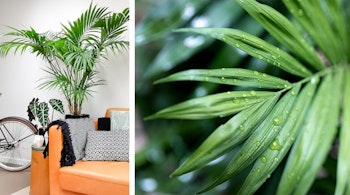
Kentia palms are ideal indoor palms due to their tolerance of low light and cooler temperatures. They grow slowly and reach up to 10 feet tall in the right conditions. These palms prefer well-draining soil and should be watered when the top two inches are dry.
- Light: Indirect sunlight; tolerates low light
- Watering: Water when the top 2 inches of soil are dry
14. Rubber Tree (Ficus elastica)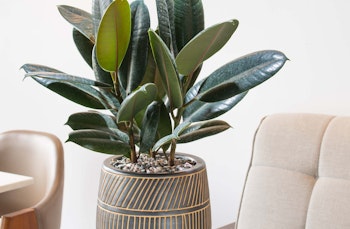
The rubber tree prefers medium to bright indirect light and requires watering when the top 1-2 inches of soil are dry. Overwatering can lead to root rot, so ensure proper drainage.
- Light: Medium to bright indirect light
- Watering: Water when soil is dry 1-2 inches down
15. Pothos
Pothos are beginner-friendly plants that can thrive in various lighting conditions, from bright indirect light to low light. They are drought-tolerant and can be grown in soil or water, making them a versatile choice for any space.
- Light: Bright indirect to low light
- Watering: Allow soil to dry out between waterings
How to Create a Healthy Humidity Level for Tropical Houseplants
Tropical houseplants thrive in environments with higher humidity, typically between 50-70%. Here are some effective ways to maintain the right humidity level for your tropical plants:
- Use a Humidifier: A room humidifier is the most effective way to increase humidity levels. Set it near your tropical plants to create a consistent, moisture-rich environment.
- Group Plants Together: Place your tropical houseplants close to each other to create a microclimate. As the plants transpire, they release moisture into the air, raising the humidity level around them.
- Pebble Tray Method: Fill a shallow tray with pebbles and add water until it just reaches the tops of the pebbles. Place your plant pots on top of the pebbles, ensuring the roots don’t sit directly in water. The evaporating water increases the humidity around the plants.
- Misting: Lightly mist the leaves of your plants with water. This adds a temporary boost in humidity, but be cautious not to overdo it, as excessive misting can promote fungal growth.
- Use a Terrarium: For small tropical plants, a terrarium can provide a naturally humid environment. The enclosed space traps moisture and creates an ideal atmosphere for moisture-loving plants.
- Move to the Bathroom or Kitchen: If space allows, place your tropical houseplants in the bathroom or kitchen, where humidity levels are naturally higher due to showers and cooking.
Maintaining the right humidity helps tropical houseplants thrive by mimicking their natural environment, ensuring lush growth and healthy foliage.

